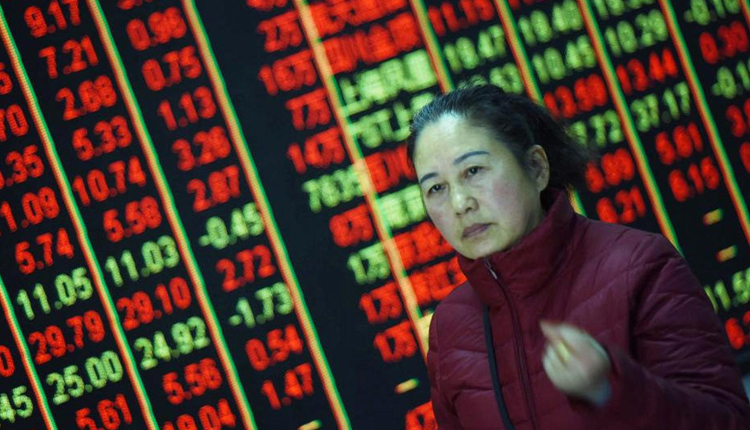Asian markets traded lower Wednesday afternoon as U.S. President Donald Trump threatened to raise tariffs on Chinese goods if the two economic powerhouses do not strike a deal.
Mainland Chinese stocks edged lower by the afternoon, with the Shanghai composite down 0.38 percent and Shenzhen component shedding 0.13 percent. The Shenzhen composite was around 0.1 percent lower. Hong Kong’s Hang Seng index slipped 0.63 percent.
The People’s Bank of China released its new loan prime rates earlier on Wednesday. The 1-year and 5-year loan prime rates were cut by 0.05 percent each from a month earlier to 4.15 percent and 4.8 percent, respectively.
Elsewhere, Japan’s Nikkei 225 slipped 0.79 percent while the Topix index shed 0.58 percent. That came after Japanese merchandise trade data for October from the country’s Ministry of Finance showed exports for the month falling 9.2 percent year-on-year — well off the 7.6 percent year-on-year decline expected by economists in a Reuters poll.
The S&P/ASX 200 in Australia declined 1.4 percent as the heavily-weighted financial subindex fell about 2 percent . Shares of Australia’s so-called Big Four banks declined: Commonwealth Bank of Australia fell 1.62 percent, Westpac dropped 3.18 percent, Australia and New Zealand Banking Group shed 1.81 percent and National Australia Bank slipped 2.29 percent.
The moves in the sector came after Australia’s anti money-laundering and terrorism financing regulator filed for civil penalty orders against Westpac.
“It is alleged that Westpac’s oversight of the banking and designated services provided through its correspondent banking relationships was deficient,” the Australian Transaction Reports and Analysis Centre (AUSTRAC) said in a media release.
South Korea’s Kospi shed 1.29 percent as shares of industry heavyweight Samsung Electronics and chipmaker SK Hynix dropped more than 2.5 percent each.
Overall, the MSCI Asia ex-Japan index traded 0.73 percent lower.
Markets have been on edge for much of the trading week as investors seek clarity on the state of U.S.-China trade negotiations as a Dec. 15 deadline approaches. A tariff hike on Chinese exports to the U.S. is set to kick in on that date.
Trump said Tuesday he would “just raise the tariffs even higher” on Chinese goods if a deal between Washington and Beijing is not reached. CNBC reported earlier in the week, citing a government source, that China is pessimistic about the trade deal. That is reportedly due to differing views on the cancellation of tariffs.
The developments came following a recent wave of optimism after Trump said a “phase one” trade deal would get signed sometime in November.
“We’re optimistic a phase one deal does get done,” Gokul Laroia, co-CEO of Asia Pacific at Morgan Stanley, told CNBC on Wednesday.
“If a deal gets done, we’re pretty positive on the near-term prospects for both the macro and the markets,” Laroia said Wednesday on CNBC’s “Squawk Box.” “The most important factor influencing that is, a deal coupled with policy is much more impactful.”
“The effectiveness of (policy), whether it’s monetary or fiscal, is a lot lower when you don’t have a trade deal done and when you have an inherent amount of uncertainty hanging over the corporate world, not just in Asia, but globally,” he added.
Currencies and oil
The U.S. dollar index, which tracks the greenback against a basket of its peers, was at 97.884 after earlier dipping to levels below 97.8.
The Japanese yen traded at 108.46 per dollar after touching lows around 108.8 yesterday. The Australian dollar changed hands at $0.6817 after rising from levels around $0.679 in the previous trading day.
Oil prices were mixed in the afternoon of Asian trading hours, with international benchmark Brent crude futures slipping 0.16 percent to $60.81 per barrel. U.S. crude futures, on the other hand, hovered just above the flatline at $55.22 per barrel.
Source: CNBC


